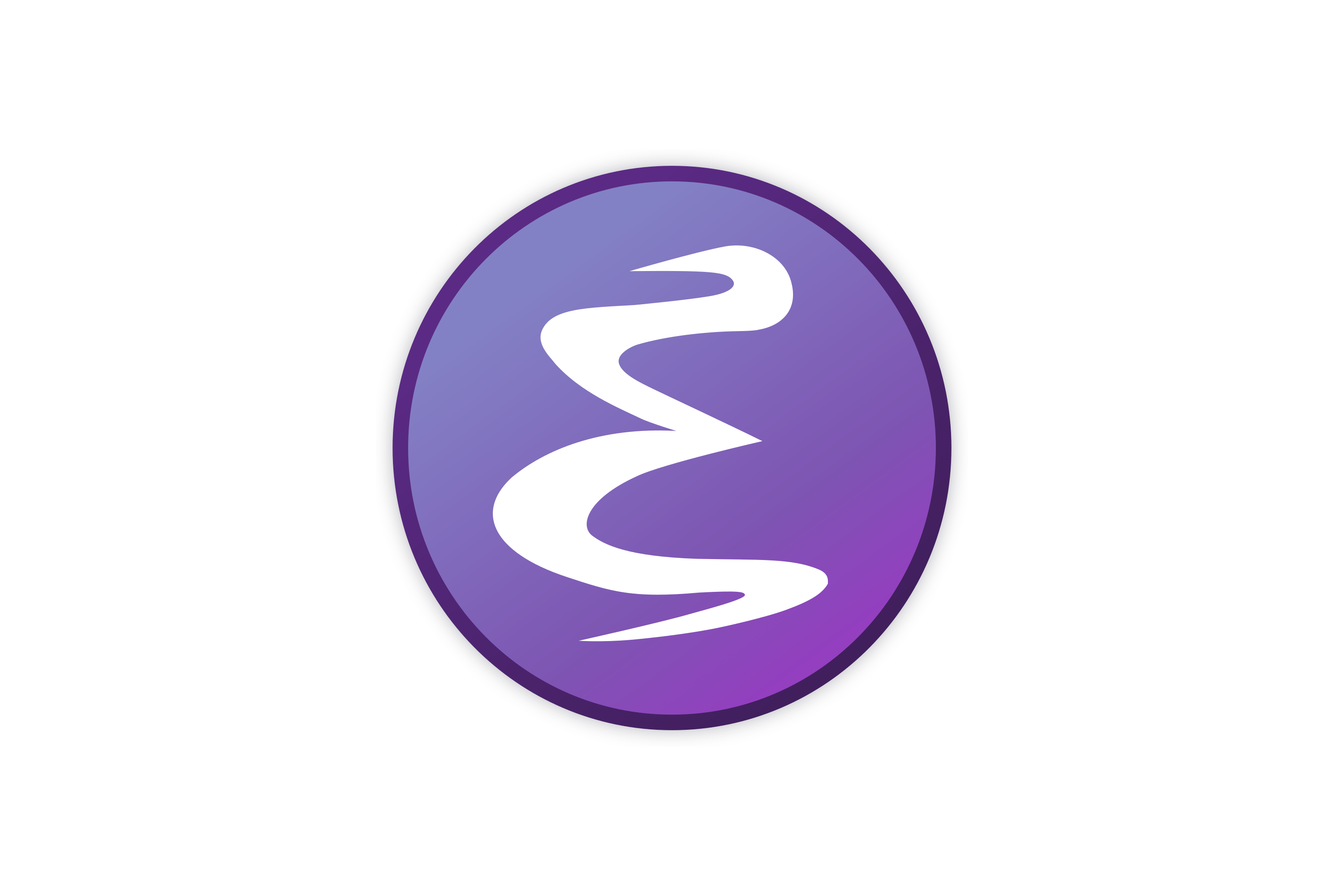Ever had a question about Linux but felt too afraid to ask? Well now’s your chance, ask any question about Linux, no matter how noob or repeated it is, and I and others will help answer them.
Previous noob question thread: https://lemmy.ml/post/14261893
No question here, just wanted to highlight that I use arch btw
I use gentoo btw
Yes, good
But what init system?
;)
Gentoo is great
OpenRC btw 😁
Chef’s kiss
I use Slackware btw
* spontaneously combusting * NOOOO
You should try NixOS, it’s pretty cool.
Don’t listen to this guy, use GNU Guix.
Real Linux users only use Hannah Montana linux. 😎
That’s old and unmaintained.
You should switch to RebeccaBlackOSMaybe. I’m busy right now.
I might do it later. Maybe I’ll do it on
🎵 FRIDAY FRIDAY GOTTA GET DOWN ON FRIDAY 🎵
Real talk, I want to try Guix but I have not successfully installed it on any hardware, including VMs. This includes with nonguix for proprietary drivers and stuff. I can never get past install, it always just craps out on some substitution thing. Am I just stupid?
So what happens, does it just not boot? Any error messages?
Tried, but it didn’t support my disk encryption, LUKS2. I intended to stick Guix in a BTRFS subvolume, but didn’t succeed.
i unfortunately using kinoite for my desktop and Debian for my servers. I am not totally in love with kinoite but I don’t dislike it enough to change back to regular fedora.
If you’re not using GNU/Hurd are you even trying?
Redox will be finished before Hurd becomes a thing.
I’m always too afraid to ask… Is this year finally the year of Desktop Linux? Is next year the year of Mobile Linux?
trolololo.jpg
I kid, this year has been the year of Desktop Linux for well over two decades for me. Obviously! And I think this megathread is great idea :)
Year of mobile linux
[ astronauts meme ]
Always has been
What is something Linux related that you’ve learned recently?
As a meta question, could this work as an additional (or alternate) recurring discussion question? It felt similar in intent, to encourage people to keep learning / asking questions and chances are that if someone learned something then others will benefit from the information (or correct them)
After 26 years of using Linux, I did my first baremetal “immutable” distro install last week.
My youngest son is starting school and instead of the Chromebooks that they recommend, I took a chance and installed Fedora Silverblue on a $200 Lenovo “student-rugged” class laptop. Everything works and he hasn’t had any issues so far. He gets access to the same student platform as the other students through Chrome, but then I can install Minetest and Tux Paint and GCompris as well.
The older kids run Debian stable for years now, but if this works out, I might transition them over next semester.
I learned how a kernel actually loads a program and switches between them by using timer interrupts and interrupt vectors that point to specific locations in memory to resume execution from. Not specifically Linux related, but I’m trying to learn more computer science, and it just clicked for me two weeks ago. I’ve been programming microcontrollers for ten years, but those are monolithic programs, and while I knew what interrupts were and have used them, I never understood how an OS actually runs multiple things while staying in control. Now I do. About time I understood a core concept of these machines that have been here all 42 years of my life.
It’s one of those “aha!” moments like when I realized classes and structs are just data types like any other in C++ when I was starting off programming and can be used like them. OOP became fun after that.
I remember when the mapping of virtual memory segments clicked for me. I think i said out loud, “that’s so clever!”. Now it just seems so fundamental to managing memory for user space applications, but I hadn’t thought about how it was done before.
The other day I learned that you can just grep an unmounted filesystem device. It will read the entire disk sequentially like it’s one huuuuge file. And it will reveal everything on that disk… whether a file inode points to it or not.
Used it to recover data from a file I accidentally clobbered with an errant mv command. It’s not reliable, but when you delete a file, it’s usually not truly gone yet… With a little luck, as long as you know a unique snippet that was in it, you can find it again before the space gets something else written there. Don’t even need special recovery tools to do it, just use dd in a for loop to read the disc in chunks that fit in RAM, and grep -a for your data.
Alright, absolute noob here, I’m not particularly interested in computer science or an OS I have to obsessively research. First, how is gaming on Linux nowadays? I play a lot of games, most of which are not triple-A, so I wonder how accessible this is. Second, what distributions are accessible and still customizable? I have all kinds of peripherals I’d like to be able to use, speaker systems, midi controllers, etc.
Fellow Linux noob, just started using it earlier this year so if someone with more experience wants to weigh in, please do.
That said, gaming on Linux is pretty good. Steam’s proton makes most games playable out of the box, although it’s still a good idea to check Proton DB to see if any particular game you want to play is playable.
As for your other question, I’m not totally sure what you mean by accessible and customizable, but I don’t think any of your peripherals are going to be distro locked. The Arch Wiki is a pretty good resource for, well, everything, but most relevant to you for your peripherals (it also usually gives good information for any distro, not just arch)
About gaming, from my personal experience, it’s overall pretty straight forward. When issues happen, you just got to have patience to read through logs and search up on Google or similar any suspicious parts of the log. Worst part is usually DRM/anticheat, but from what I can gather, usually pretty isolated cases are problematic due to compatibility, usually requiring the devs to go out of their ways to make the DRM incompatible.
As for the distros question, perhaps Linux Mint? It trades off bleeding edge updates for the sake of stability. Just avoid the Debian-based variant of Mint for now as it’s still in beta.
I may be misunderstanding here and feel free to correct me if I’m wrong but I was of the understanding that Mint wasn’t a good gaming platform because of the fact it’s not bleeding edge
To my knowledge, besides the newest updates not necessarily being as stable, but also, other softwares that interact with it would need time to adapt themselves to be sure they’re as compatible as they were before. In a situation of constant updates, other software would always be on a situation of catching up, whereas updates that take a bit longer to land allow “for the dust to set down”.
Q1: Pretty good! Use ProtonDB to check what games work, and if you need to apply any fixes.
Q2: Linux Mint is the most popular choice for beginners, and it’s extremely easy to use. Other people choose Pop!_OS because it’s apparently better for gaming (I haven’t tried it). However, I think the best distro for gaming, while still being extremely stable, is Nobara (a distro based on Fedora Linux).
Also, practically all Linux distros are customizable, don’t worry about which one’s the best.
P.S: You can browse through the most popular distros here: DistroWatch
(Background: I’ve been obsessively using Linux for four years.)
I can also recommend Zorin OS for a semi-familiar look with a very polished design. Switched to it as my first distro after ditching Windows for good.
It used to be that someone with midi controllers could be assumed to be technical enough to say “you’ll be fine, everything will work”, but most of the time nowadays software just automatically figures out stuff and you don’t have to go looking at the implementation chart and using midiox to see where you’re screwing up,
So,
I’ve never seen an interface that didn’t work, but if you’re not comfortable troubleshooting midi signals then give it a shot and see.
What are you using midi for, a daw?
I have an old (2017) Windows 10 box that is ineligible for Windows 11. Originally purchased to run my Oculus Rift, it now just streams YouTube and Twitch and plays some old Steam games and occasionally school related stuff (Lexia, Scratch, stuff like that).
I started thinking that, rather than worrying about an unsupported Windows OS on my network, I might upgrade to Mint or Ubuntu.
So, my question(s) is/are, how much of a hassle will such an upgrade be? Will I need to wipe the drive, or can I keep my files without having to back them up first? Can I run Windows games on Steam with Wine? Are there good 3D card drivers nowadays?
I’m reasonably versed in using Linux as a user, less so as an admin, in case that affects the way you answer.
-
Depends on how much crap you’re willing to put up with. It’ll all be worth it in the end! (Pro tip: disable secure boot in BIOS)
-
I wrote a whole guide on the two options, but then accidentally deleted my comment. You can either install Linux on another drive, or shrink your NTFS partition and install Linux alongside it. You can always access NTFS from Linux, but not the other way around (by default). If you don’t understand what I’m talking about, you should really look it all up. I would personally just backup and wipe, you can always reinstall Windows if you want to.
-
Have you heard of Valve’s Steam Deck? It’s a handheld gaming device that can play nearly every PC game, and it runs Linux! Valve made gaming on Linux an absolute breeze thanks to Proton. There are some popular games that don’t work, either because Tim Sweeney hates Linux (yes, really) or because the anti-cheat won’t accept Linux, but I only know about Destiny 2 and Rust that have that problem. Easy Anticheat works just fine, I play Apex Legends and Deep Rock Galactic with no issues!
-
If you have AMD, you don’t even have to think about it. Their drivers are part of the Linux kernel. Nvidia is not impossible to use, but you might have some issues. I experience random desktop environment crashes that I can only attribute to their drivers, but it only happens on startup sometimes, which is the least annoying it could be. If you choose a distro that doesn’t mind automatically installing non-free software, you probably won’t need to think about it either. The open source driver, Nouveau, works fine but performs awfully in games (or at least it did a year ago).
If you just want some clear instructions: backup your files, wipe your disk and install Linux Mint Cinnamon Edition. It’s easy peasy to use and getting the proprietary graphics drivers is only a few clicks away. Just configure your Steam games to run through Proton and you might not even tell the difference.
Thanks for the detailed explanation!
If your Windows partition is encrypted with BitLocker (which it probably ought to be, for security), and you disable Secure Boot, Windows will get angry at you.
You can set up Linux to do Secure Boot (I think I saw Fedora do it for you automatically), but it’s extra hassle.
You might be able to decrypt BitLocker in Linux: https://github.com/Aorimn/dislocker/
-
There would be no hassle in wiping the drive, you can do it as part of the super easy installation process for any Linux distro. Ideally you would back up any important files and drop them into your fancy new file system once the install is finished. And you can pretty much launch almost any game directly out of steam and it will run. There are a few exceptions for some of those games with anti cheats that rootkit your system, but the majority just work out of the box. Drivers included, but Nvidia might be ever so slightly annoying
Games work fine, if you install linux as a dual boot, you can move the files over (windows files appear as if the windows install was a usb key). Also drivers are fine
Everything people are saying here checks out, but you might struggle with VR. I haven’t tried VR on Linux yet, but I’ve heard some things about support being pretty janky. Maybe others with experience can weigh in.
I’d be interested to see what people have to say regarding VR setup, but the Oculus gets little use anymore. I have a few games that were never ported to the newer, self-contained systems (I have a Quest 3), and we’ve downloaded a bunch of custom Beat Saber levels that I might feel bad about, but the sensors are a big enough pain to set up that I don’t know that I’d feel that bad.
Yeah, I’ve considered VR for a long while, but between the already existing headaches, and the Linux related headaches I’ve heard of, I’ll just wait until I’m retired for VR space games, VR racing, and VR porn. Hopefully it’ll get better before I’m dead.
I myself have a Quest 3. I use Air Light VR as a streamer, which only worked after I added something to do with a vrmonitor.sh to the SteamVR command line. Half Life: Alyx runs natively and works just as well, but I’ve had bad luck with most other games, primarily because Steam Cloud didn’t synchronize the Windows saves to my Linux machine. VR even on Windows is already a PITA to set up, and I just don’t have the willpower to get it working properly on Linux. This is the only reason why I even keep the waste of space that is my Windows partition.
To install at minimum you’ll need to likely shrink existing partitions and create new ones for linux if you don’t want to wipe the drive, that would be a dual-boot setup with Windows still installed along side. Or you can just wipe the drive entirely and have only Linux.
Regarding the files you should already have backups of anything important, if you don’t, set it up ASAP.
Messing with partitions can easily cause data loss if something goes wrong.
You also never know when hardware failure, malware, power surges, lightning strikes, or whatever other disaster will happen and cause data loss. 1 copy of files might as well be 0 copies.
I’m pretty sure anything of value is already backed up to my NAS. I’m just paranoid that my kids might freak out that I destroyed their state fair winning Scratch project or something.
I just do full system images for that reason, easier than trying to pick and choose what should be backed up. Used to use Veeam, currently using Synology Active Backup.
For online backups I don’t due to size, but for local backups it’s just way easier.
Truth. Full system would be easier.
That was half the reason I upgraded. I don’t know if my old box would’ve been compatible (probably was), but I wanted it off Microsoft territory so bad and heating about Copilot sent shivers all over my spine.
I’ve never heard of installing any new OS without having to back stuff up. That’s just wishful lazy thinking lol.
You probably won’t have to do anything manually about Wine. Steam has Proton built in and it works great. As others always mention, check ProtonDB.com for user reports on how a specific game will work out.
I haven’t run into any problems in my library, but I honestly haven’t installed a ton of games.
I’ve used Heroic Games Launcher and Lutris for some other launchers (like Battle.net or Epic Games), and those have been a little hit or miss, but I think the main problem is something I’m missing. Not a huge priority but I’m still working on it occasionally.
I haven’t heard anyone call or 3D card since the 90s. They’re video cards or GPUs these days man. AMD has open source drivers that work just fine with Linux and should work just the same as the Windows version I believe.
Nvidia has open source ones, but they seem to be pretty terrible compared to the closed source ones. I had one issue with them last week but I think that was more related to KDE than it was the drivers’ fault.
I don’t really have any fancy hardware to describe how easy that was to get to work. Just a mouse, kb, headset(with mic) all of which worked fine without doing anything. I have a physical dongle for the controller, so I had to get a driver for that so I didn’t have to use a Bluetooth connection (pretty shitty comparatively speaking) or gasp plug it in. Had a few issues with it for a while, there was an updated version under a new name and such but it all works now. Just turn the controller on and it’s working instantly (unless I forget to charge it lol).
I’m on Linux mint 22 and my audio outputs don’t change automatically. When I plug in USB headphones, audio won’t output to them unless I manually change it in settings.
Also, why can’t I interact with the panel applets (on the right side) while I’m in game? For example: I’m playing a game, I plug in my headphones, I have to manually change the audio output so I hit the “windows” key to bring up the panel, but I can’t interact with any of the applets on the right side of the panel (I can’t select the audio icon and change settings from there). I have to search audio settings in the panel then alt tab to it. It’s really cumbersome
Fun fact: The “Windows key” (or “Command key” for Mac users) has its own generic name: the Super key!
Not trying to be a smartass here; I genuinely find it fascinating! :D
Some distros call it the Meta key.
I didn’t know that. Thanks!
Which distros, out of curiosity?
Fedora KDE does. I think it’s going to go with the DE rather than the distro, I bet Kubuntu also does.
I think dating back to the Space Cadet keyboard, Unix systems recognize 6 modifier keys: Shift, Control, Alt, Super, Meta and Hyper. It is my understanding that they choose to bind either Super or Meta to the “Windows” key (or the octothorpe whatever that thing is called key on Macs) and in practice it’s used as another modifier key, often with Windows-like functionality such as opening the Menu if tapped tacked on.
That is so weird. Haha.
Oh that is interesting. I had seen that used before but didn’t know what it was lol.
Can you try
"pactl load-module module-switch-on-connect"?maybe a silly question bit is mint using pulse audio?
It’s not a silly question; I thought it doesn’t matter because PipeWire supports Pulseaudio.
The latest version of mint (22) is using pipewire now.
It says “no valid command specified”
Did you enter the command line (especially
load-module) correctly?“Pactl load-module” outputs “you have to specify a module name and arguments.”
I duck go’d that command and it seems like it’s for pulseaudio. The latest mint release uses pipewire for the audio server. Is the command different for that?
“Pactl load-module” outputs “you have to specify a module name and arguments.”
As I said in earlier comment, please run
"pactl load-module module-switch-on-connect"exactly. Note thatPactlandpactlare different commands and the former is invalid.Is the command different for that?
As the name suggests,
pactlis a command for PulseAudio. PipeWire supports application written for PulseAudio, includingpactl. Try"man pipewire-pulse"to get further info.That seems to have worked. Tbf, your original comment displayed as “pactl load-module module-switch-on-connect” Which indicates 2 seperate commands.
With the recent Microsoft garbage, I’m giving Linux another try. I’ve been running a laptop for a while, no issues. My main rig, however can’t read all of my um…?hard drives
A live USB of Mint 21 reads 2 of 5 drives fine. The rest are recognized from GParted, but can’t access them. It looks like NTFS-3G is installed.
I’ve duck duck go’d (which apparently is just Bing) for a solution, but haven’t succeeded. Long term, I can probably pick up another drive, copy, and reformat everything to something Linux friendly. For now, I just want access.
I’m lazy and burned out. I don’t want to use the terminal- which I did try. I just want to make a few clicks and have access to all of my files.
If it matters, the drives (roughly) show up as: 500 gb, 4 TB NTFS (readable) 3, 12, 16 TB unknown (not readable)
Windows says they’re all NTFS.
Is there an easy way to easily mount my drives?
If you can boot back into windows, turn off quick startup/shutdown, run chkdsk or whatever on the drives, reboot back into windows then boot back into Linux and you’ll be okay.
Quick startup is a kind of weird sleep/hibernate mutant that leaves drives in an unclean state when it turns off, so the Linux drivers for ntfs say “I’m not gonna touch that possibly damaged drive”.
It was a good theory, but no luck. I’m perplexed on this one.
Can a windows boot usb also not read them? If so and if you have the space to do so, it’s worthwhile to backup, reformat and repopulate the unreadable drives.
I think the disks could be Dynamic Disks on which it would not be a good idea to install a linux distro.
Unfortunately Microsoft’s own advice to change it to a basic disk (since it considers dynamic deprecated) WILL RESULT IN DATA LOSS.
Since you only want to access them it seem to be possible with ldmtool. While it is a cli tool there is a corresponding service that at least according to some askubuntu posts and arcwiki should make them behave like normal filesystems.
Double checked and all of the drives are basic. I’m very confused as to what is different between the disks that readable and the ones that aren’t.
I’ve even tried multiple distros. Same scenario.
That’s a bummer. Unfortunately I can’t think of something else since fast startup has been suggested by another user and it’s also not the case.
The drives are shown as NTFS by Gparted right? Also can you confirm that the sizes should be those sizes? As in do you remember from when you bought them? 16 TB is still a big drive. Additionally can you confirm that they are all different drives and not partitions on the same disk.
Do they show up on the file explorer sidebar or if you go to “Other Locations” (in the file explorer)? If so do you get an error when you try to access them?
If they don’t unfortunately you probably will have to use the terminal to try and mount them so we can hopefully get some error message and hopefully some clue to what is going on.
I don’t know if this is specifically possible. I’m not quite rookie-level new (been using it about a year now) but I have something I would love to have convenience-wise.
It’s a desktop machine with regular speakers, and I have a wireless headset that connects to its own dongle (not Bluetooth). It’s there a way to switch to the headset automatically when I power it on, and revert to speakers when I turn it off?
I feel like it’s possible hardware-wise, but I’m not tryna learn how to code to make it happen, and I don’t know how to find a software solution. I don’t even know what to call what I’m looking for.
i’d suggest starting by finding out what package in your distro actually decides where audio goes - mostly it is pulseaudio (older) or pipewire (newer).
depending on the details of how your distro and the dongle work, it could either be a simple “pactl set-default-sink <headset-name>”, or a more complicated set of udev rules or pipewire/wireplumber scripts.
note that distros using pipewire still often support a lot of pactl commands, so it may be worth looking at the simple option even when not using pulseaudio.
They can also use pavucontrol, whether they use pulse or pipe, for a GUI to select default audio interface as well as easily switch apps to different outputs if needed
Is the dongle visible by the system only when the headset is powered on? Does the computer have any way of knowing you’ve turned your headset on? What make and model is that headset?
-
For Linux enthusiasts, how do you decide which distro you would like to try out next among the plethora of options that are available? The difference I perceive between majority of distros gets smaller the more I try to understand about them.
-
What are the minimum issues I am likely to face using the most beginner friendly distro like Mint for programming and light gaming?
-
How customizable is the GUI in Linux Mint specifically? What if I want a start menu like Windows 10 with the app list and the blocky app tiles? What about those custom widgets I see in hardcore Linux users’ desktops?
-
I heard there is no concept of file extensions in Linux. How am I supposed to work on my projects that I imported from my Windows machine that do contain extensions?
Bonus: Who creates those distro icons in color coded ASCII in the system info command in the terminal?
For the #4, the file extension can be seen just as a note, a little tag that’ll help you (or anyone else that will receive your file) remember which program you should use to successfully open the file.
From the viewpoint of your computer, in fact, a file is just a sequence of bits and every program can open every file, only it will not be able to find what it expects and actually do something useful with it, just as you can open a book written in any possible language: in most cases you will unable to undestand it, in some others you will be able to read it without any problem.
The “concept” of extensions was than introduced to allow your file manager (Explorer for Windows, Finder for macOS, Dolphin for KDE or Nautilus for GNOME) to know which program to launch when you double click on a certain file through a simple association table (that you can edit in your system preferences).
In regards to Linux you can sometimes read that file extensions are not a thing, but this is just because in the commandline you launch a specific program that you personally point to a certain file, so there is no file manager that needs to guess which app should be launched to open the document you just double clicked on.
That said, I think that should be pretty clear that in a Desktop context (like in a Personal Computer) that double click on a file situation pretty much applies to Linux too, so extensions will be useful and respected by the file manager you’ll find installed in your distro of choice, even if it can use other means when that is missing.
I’m afraid this answer isn’t 100% correct. There are ways to find out a file’s type beyond looking at an extension. For example, there are lots of file formats where all of the files start with a specific sequence of bites, known as a file signature (or as “magic bytes” or “magic numbers”).
You can try the
filecommand line tool to check that you can find out a file’s format without resorting to its extension, and you can read the tool’s manpage to learn how it works.Yes, I know about them and always prove extremely useful every time I receive a file with a wrong/no extension and have little clue about its content. But since the question was about how OP could work with “files with extensions” produced in Windows, I wanted to help clarify what are they, why they are used and that files do not need to be converted or whatever to be opened in Linux as it can “work with them” just fine.
- I usually stick with distros that have large userbases. I’ve tried smaller and niche distros before, and inevitably they stop being maintained, or move in a direction I don’t like. The larger distros like Ubuntu, Fedora, OpenSuse, have more resources (people, time, money) to spend on testing updates, and have reliable update schedules. When I was younger I didn’t care about that kind of thing, but these days I use my PC almost exclusively for work 10 hours a day, 5 days a week, I need my PC to not break when I update it.
Another technique I use is to go to the vendor site for software I use and look at which Linux distros they officially support. Usually they will publish at least an Ubuntu package, sometimes a universal deb file that works on Ubuntu, Debian or Mint. Sometimes an RPM package for Fedora/CentOS too. This is getting less relevant these days with Appimage files and Flapak images that work the same across all distros.
It’s natural to get bored or frustrated with one distro and want to try out others. Imagine if Microsoft made many different flavours of Windows that each look and operate differently, everyone who is bored and frustrated with default Windows would be trying them all out, comparing them, debating the pros and cons, communities would form around common favourites.
I have a small gaming PC that I use to test out other distros, I’m currently on Nobara, that I actually highly recommend for a gaming-focused distro.
-
This one is really hard to say. It depends on so many factors like what hardware you are running, what software you plan to run, how tech savvy you are, even your definition of what is an issue. Mint is very stable and easy to use, you may run into zero issues getting it installed, running VSCode, playing some Factorio. Or you might run into a small incompatibility between your GPU and the bundled kernel drivers and run into a whole world of hurt spending days tinkering on the command line with no usable graphics driver.
-
I believe Mint still comes with the Cinnamon Desktop, that is specifically designed to be familiar and easy for users transitioning from Windows. It’s not super customisable, but I think it can do what you described. I’m not the best person to answer, I haven’t used Mint or Cinnamon since 2012.
-
File extensions are optional in Linux for some kinds of files. Linux usually tries to identify a file type using a “Magic string”, meaning it will read the first 8 to 16 bytes of the start of a file and will be able to tell with a great deal of accuracy what kind of file it is. Executables, drivers, shell scripts, and many others use this method and do not need a file extension. You can definitely still use extensions though. Eg, libre Office will still save documents with a doc extension (.odt). Often Linux will use a combination of both the magic string and the file extension to determine the file type. Eg, the magic string identifies it as an open office file, and the extension tells you it’s a document kind of office file.
Your Linux photo editor will still save images with a .png or .jpeg extension, because these are the convention (and may be required if you will be opening those files on a different OS). Similarly, your project files created on Windows will still work fine on Linux (if the equivalent Linux app supports that file format).
For #1, I’ve made the realization that most distros are lightweight skins or addons on top of another distro. Most of the time, if you start with the base distro, all you have to do is install some apps, change some configurations, and suddenly you have that other distro. It is much easier than doing a reinstallation.
If you filter out all of these distros that only do a little on top of an existing, you’re left with a quite small number actually. I’d bet it’s less than 10 that are not super niche. Fedora, Arch, debian, gentoo, nixos are the big ones. There’s some niche ones, like void Linux and Alpine.
So I’d say if you try all of those, you don’t need to try any more 😁
-
I don’t distrohop. Instead I just use what works for me and what I find comfortable.
-
You will eventually need to use the terminal. And it will be overwhelming at first. But eventually the learning curve flattens a little when you get more comfortable not breaking your system ;þ
-
Can’t comment
-
File extensions are, in essence, nothing but a convention. You don’t even need them in Windows, really (You can open a file with any program, for example, you will just not get anything useful from it). So it’s far from a big deal.
-
-
I rarely distro hop. I used Linux Mint for a solid decade. I’ve made the jump to Fedora KDE pretty much entirely because Wayland support is the farthest along here, and that enables me to use more features of my hardware such as two monitors at different refresh rates, Freesync, etc. I did come to the conclusion awhile back that there’s a lot of pointless distros out there, a lot of them are just “I want this particular permutation of default software.”
-
Assuming you’re currently a Windows user, I think the main issue you’re going to face using Linux Mint Cinnamon Edition for “programming” is going to be general culture shocks. Using a package manager instead of heading to the browser, stuff like that. “Light gaming” depending on what you mean by that could be no trouble at all or dealing with some hiccups involving Nvidia’s imperfect support. There are some games that require proprietary anti-cheat that doesn’t support Linux, Valorant is one of those that springs to mind.
-
Difficult question to concisely answer; Mint has a system they call “Spices” which include a series of applets and widgets you can add to the UI, choose them from a menu and then configure them. One of these is “Cinnemenu” which replaces the default Menu with a somewhat more customizable one, though you might struggle to exactly replicate the WIndows look and feel. Beyond that, you might look at Conky for your desktop customizing needs.
-
File extensions do exist in the Linux world but they’re not as important for making things work as it is on Windows. Some files, particularly executable binaries, won’t have extensions at all. A text editor might not automatically append .txt to a plaintext file, because it doesn’t want to assume you’re not writing a bash script or config file or something. But if you record a sound clip with Audacity or something it’ll add a .wav or whatever extension as appropriate.
Bonus: You probably mean Neofetch (or whatever we’re using since the developer of Neofetch has “gone farming”). Those are hard-coded into Neofetch by its developer.
-
For #2,
For gaming, if you use steam, you may not face more than the following:
- game does not work with no well known way to resolve. You can find this out by checking protonDB
- game does not work because it needs to enable some options. Very easy to fix, and you can find the options on proton db for each game.
- does not work because you didn’t setup steam right. You often need to enable proton, which in short is steam’s emulator or windows
- does not work because your gpu drivers did not install. This depends on distro and they should all have a guide on how to do it, but usually it is just a matter of installing something.
For programming, you will love your life because everything programming is way easier on Linux.
-
Is there a way to assess which packages on my linux distribution aren’t open source? I’m planning on having a secondary machine which is exclusively open source, but not sure how I would go about ensuring that is the case.
This would depend on the distro you use. Most distros will require you to enable a non-free repository before you can install anything that isn’t Foss or open source from the official repos. You could also use an FSF approved distro. Keep in mind, the FSF will only approve distros that don’t include any non-free anything in the official repos. Besides that, you just have to know the licensing before you install it.
The language you want is “nonfree” in Debian derivatives.
Depends on the distro. Some have a configuration setting to allow unfree software or not, others have separate repos.
Depends on the distribution, many package managers can filter by license. So you can find anything that doesn’t have an open source license.
Is it wise to go for arch to try linux for the first time?
First time Linux user you mean?
I wouldn’t recommend it, unless you can navigate the terminal well. When you install arch, it installs no desktop environment, only the ability to talk to a terminal.
It’s technically possible and very doable with some googling, but I wouldn’t recommend it.
Depends what your goals are. With Arch, you will need to closely follow a guide to get it installed, if anything goes wrong you will need to search through the Arch Wiki for answers. Arch has an insane amount of customisation options, you will spend a lot of time in the Arch Wiki learning about them. By installing Arch you will learn a lot about Linux. Is that your goal?
You will spend more time reading and learning, but come out further ahead than someone who first installs Ubuntu or Mint.
However if your goal is to simply install Linux on your PC to try it out, (if you don’t even know if you will like it, and don’t know if you want to learn it’s mechanics) then Arch wouldn’t be my first choice.
No
This is what I did. If you generally know what you’re doing around computers it just requires patience and a willingness to “Read the (Friendly) Manual.”
If you’re running intel, nVidia, dual GPU setup, and some other things, your installation will be more involved.
But the great part is that once you’ve set all that up, things just generally work and the Arch wiki is an amazing resource.
The arch wiki is difficult to use for beginners. Each page is single topic. It is not a guide. Using it daily, it takes at least a month to understand it well enough to “build your own guides”. If you want to do that kind of deep dive, jump on in. If not, you’ll have a better time using just about any distro other than arch.
BTW. If you do decide to take that route. Don’t become one of those miscreants who “uses arch btw” It’s a red flag for someone who doesn’t know wtf they are talking about.
I’m using Arch, I love it. What’s absolutely bonkers is that the system belongs to you.
However, if you have never used Linux, it’s insane to try to install Arch. The online wiki is tailored for people with at least a decent amount of Linux knowledge.
As a noob, it will result in data loss, except if you’re already very familiar with terminals or are very fluent in IT.
You might want to try something more user friendly, as Zorin then come back to Arch when you want more power.
Could you point me to a good place to start learning how to troubleshoot? I added Unbuntu as a dual-boot to my gaming rig a while back, and when it works, it’s great. But as soon as I hit an error, I drop back to Windows because I know how to fix shit there.
First suggestion: commit to using Ubuntu for a set period of time. Could be a week, could be 2 hours. When you encounter issues, force yourself to stay on Ubuntu.
What you’ll find is that at first, errors will seem like gibberish, then you’ll do some snooping online, and find out how to access some log files or poke around your loaded modules. You’ll slowly learn commands and what they do.
Eventually, something will click, ie; “wait a minute, I just checked to see which kernel modules are loaded, and I’m missing one that was mentioned in my error, that must mean I need to load that module at boot.” You load that module, reboot, try your command again, and bam, everything works. You’ve learned how to troubleshoot an issue.
The best way to learn Linux is to immerse yourself in it. You can’t efficiently learn German if, every time you hear a phrase you don’t understand, you switch back to English, right?
Ubuntu Wiki Ask Ubuntu Ubuntu Forums
The wiki has some information and should correspond to how Ubuntu specifically is configured. You can ask for ubuntu specific help in those communities. You can also ask here and on several Linux communities on Lemmy.
The Arch Wiki I find to be more in depth than the ubuntu wiki. Of course some things may differ from Ubuntu’s defaults but I found it a useful resource when using Ubuntu.
Finally I suggest you learn a bit about how Linux works in general, what is in what directory, what is wayland and xorg, understand how drives are named etc and some understanding of the terminal (moving around in directories, how to use sudo etc, no need to learn to make bash scripts).
The first thing I’ll say is the reason you’re more comfortable with Windows is because you’ve been using it for however long and learning to deal with the issues it has. The same needs to be done on Linux. You’ll have to learn how it works just like you forgot you did for Windows.
Second, along with logs like other users said, you have to know how to use a search engine well. Most issues will be easy to solve, but some may take some searching. The Arch wiki is a good resource even if you aren’t using Arch.
I recently had the realization that I’ve just been putting up with Windows bullshit forever recently when a friend asked me for help with their work PC. They’re a Mac user, but they just started working from home and have been provided a Windows laptop. They sent me a bunch of rushed texts when their headset stopped working. They changed the default audio device after they launched the program. Which never works on a Windows PC. I never have that problem because I have just learned to live with it, I don’t even think about it anymore.
Now I’m really starting to notice all the little things I put up with from Windows on my machine. To be fair my Linux machine is just as janky but at least I can say I made it that way. I keep telling myself to ‘tidy’ my Linux machine up but I never do, it still plays games just fine. Usually. If I didn’t fuck with it.
Just come ask here when you have trouble, and we’ll try to help.
When troubleshooting, the biggest thing is searching the web honestly. But some more things to help you out: look for logs. Linux has loads of logs and sometimes can tell you how to fix the problem.
Logs may not be immediately apparent. Some programs have their own log files that you can look into. Sometimes, if you run the program from the terminal, it’ll print out logs there. Otherwise, you read look through journalctl, although this has logs for everything so might be harder to search.
Another useful tip, particularly for system tools and terminal tools, is manual pages. Just run
man lsand replace ls with any command, you’ll get the documentation on how to use that tool.
I’ve got one progam that I need for work that I cannot get to run on Linux. I’ve tried WINE on both Ubuntu and Zorin (and winlator for android). I have the installer exe file and try to launch with WINE but then nothing happens. Is that a program problem, WINE limitation, or something else? Is there a different program I should try to launch it?
How are you launching the exe with WINE? Try doing it via the command line if you aren’t already. That way you may get some more information about why it isn’t working. Its as simple as
wine path/to/your/exeYou could also try something like Bottles, which will let you use possibly newer versions of WINE without modifying your system’s WINE.
It could be that only the installer has issues. If you’re dual booting have you tried launching the already installed program from your windows partition?
Otherwise I would try launching the installer from the wine command line to see if it gives you a specific error there.
Using a different version of WINE/Proton could work. It may also depend on some extra utilities you need to install on your WINE prefix (Wine tricks is the tool to use for this). If that doesn’t work, the almost guaranteed to work option is a virtual machine running Windows. This comes with a small performance hit, but that may not be a concern.
I got one!
What constrains access to an rpc socket in the file system? Is it just the permissions of the socket or is there more to the whole process?
E: I originally wrote port instead of socket because it was early lol.
What’s an rpc port anyway? Do you mean DBus? Then FS perms of the socket. Perhaps also something in the protocol itself.
I meant to write socket instead of port because I was tired.
If for example a program can take rpc over a socket which is a file somewhere is it just the filesystem permissions that determine what can be done or is there more at play?
FS permissions are the main thing, yes. One can build more systems around it (don’t mount the socket into a Flatpak container, if you don’t want the Flatpak to talk to DBus) or (implement some sort of auth protocol like TLS does).
Ty!
Is plasma big screen really an option? Id like to install it on a desktop to act as a android tv. Launch Stremio, YT and maybe one or two other apps/websites. Easy big tile navigation with remote (flirc).
It’s in dev since 2020. The images hosted on the site are bit for any of my hardware. It says theres a Debian package. Installed that though LMDE but it was horrible. Somone mentioned Kububtu can install it with apt, but its not listed. Think I’ll give up.
Good question! Someone let me know when there’s an answer.




















